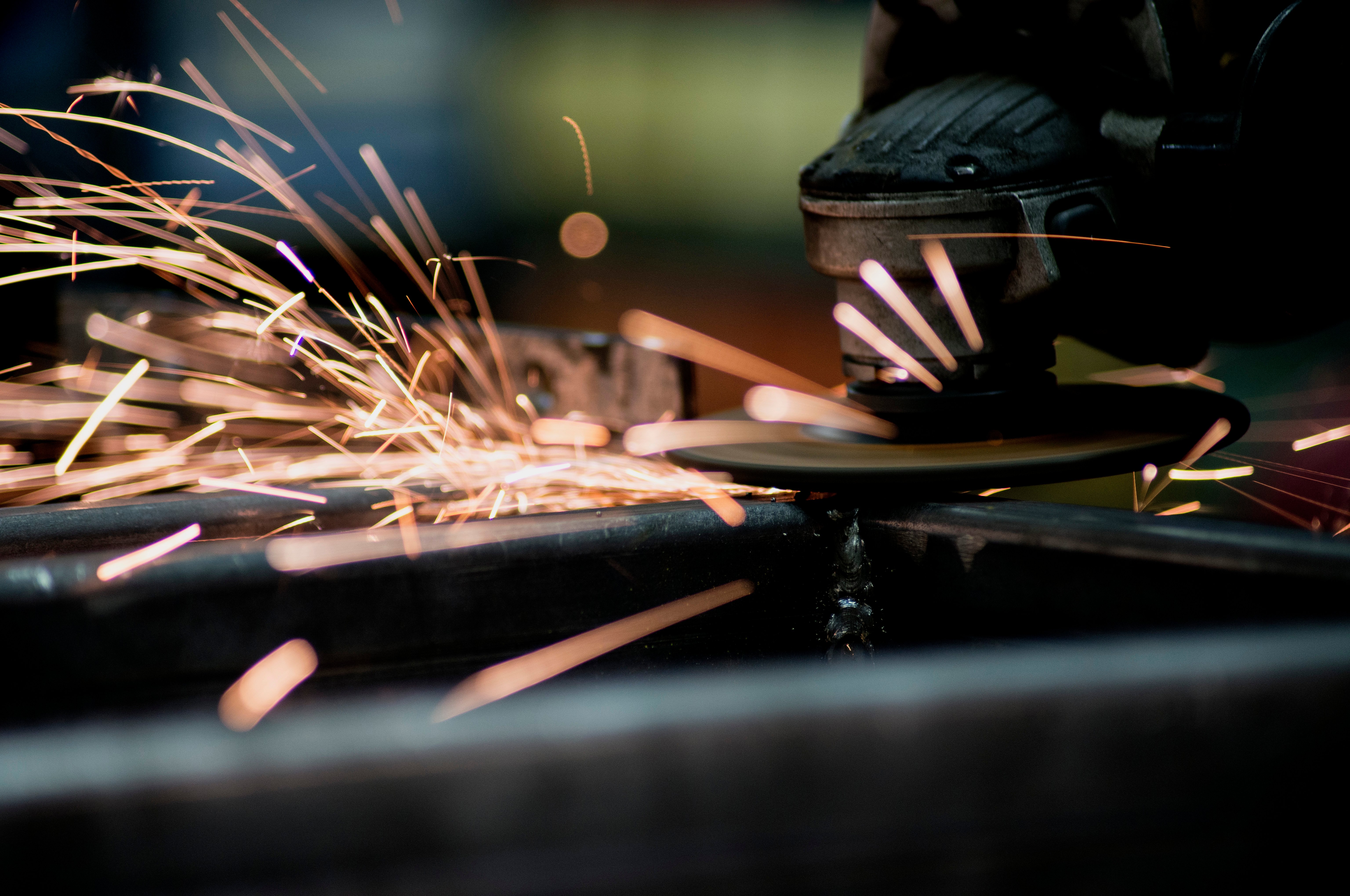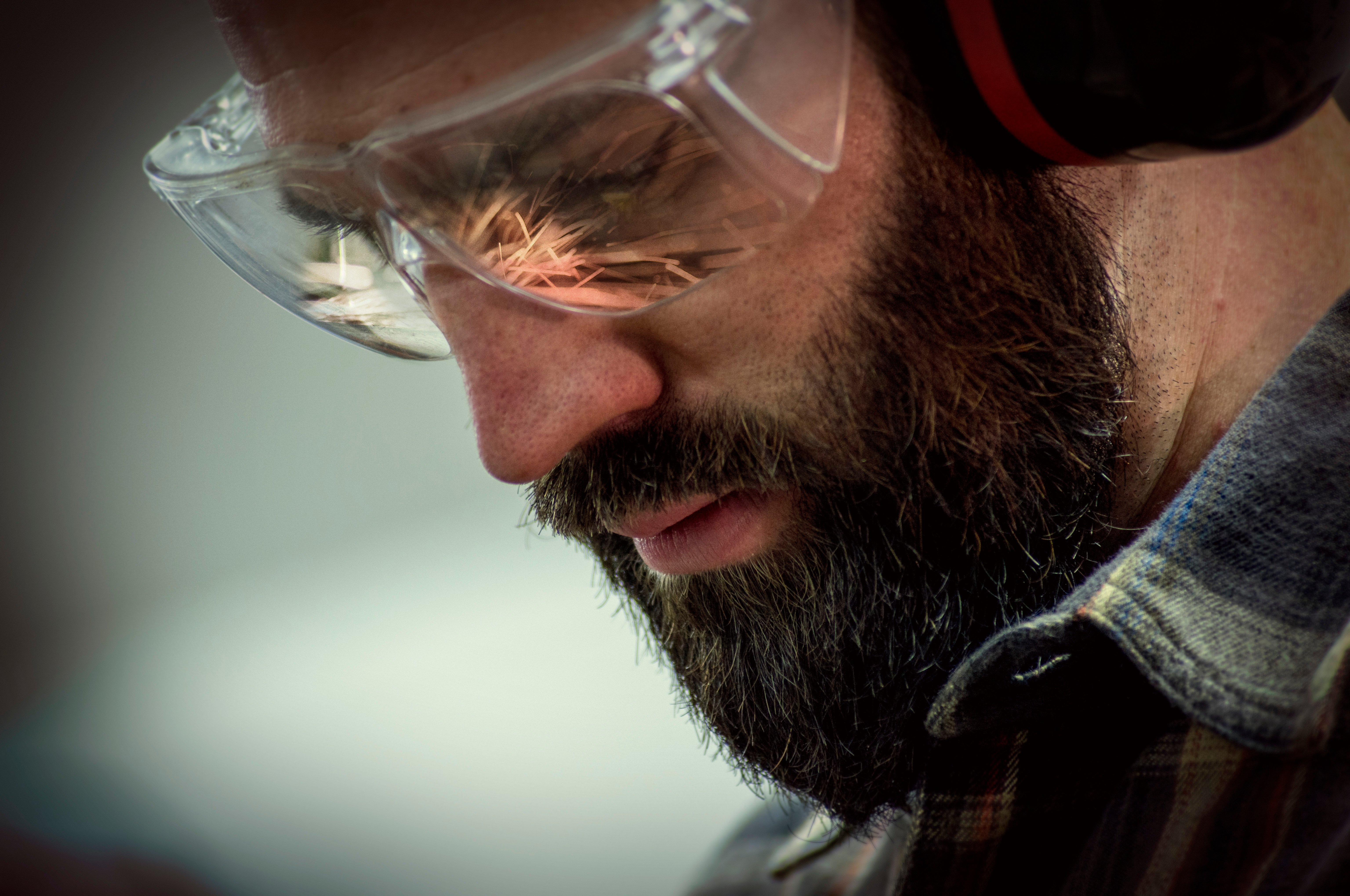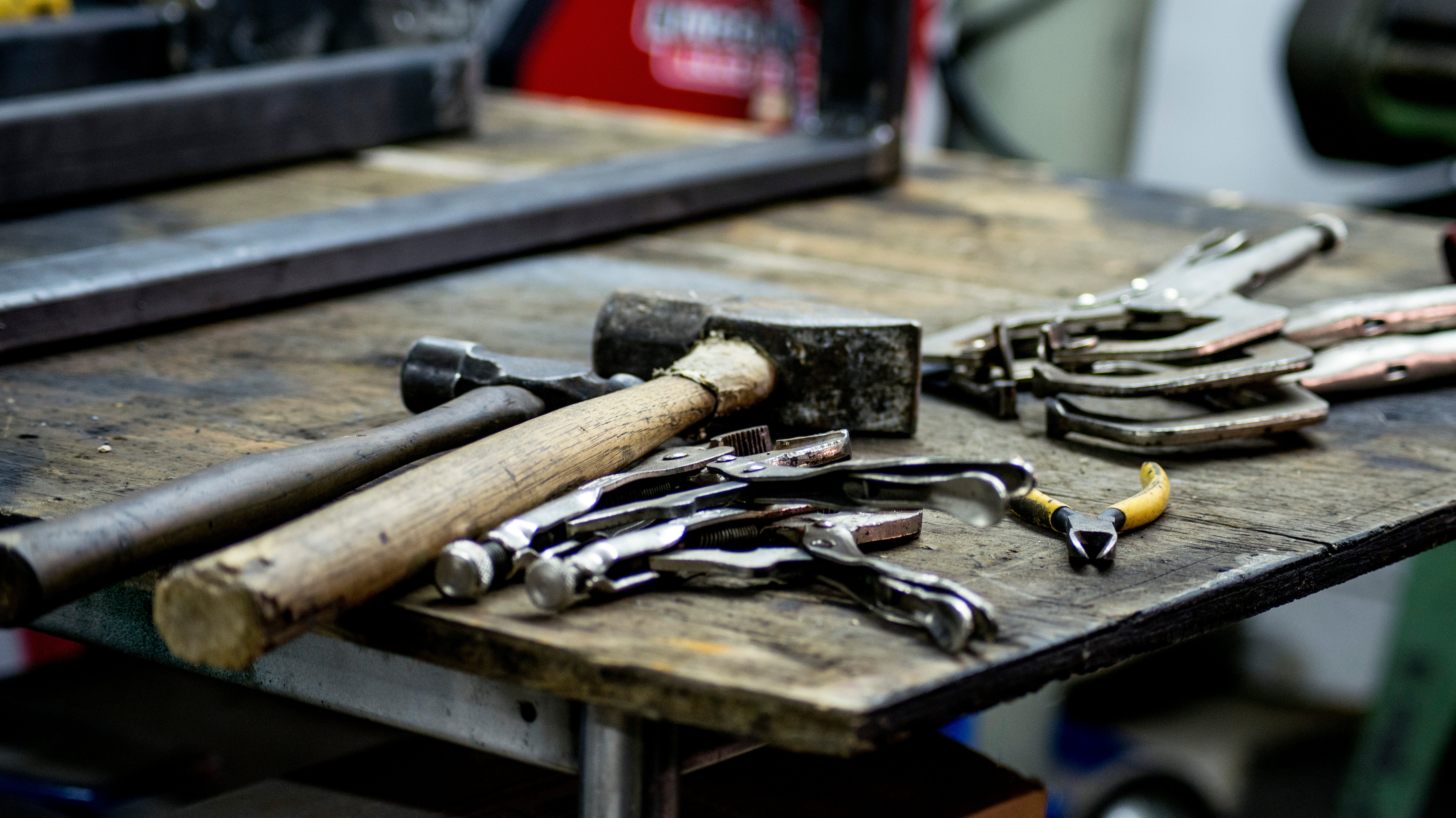Makers 1-on-1 is our original interview series featuring today's makers and DIYers. We're sitting down with new makers every week to learn more about their projects, how they acquire information, their purchase processes, and their passions.
 This week, we're interviewing Michael Kamlowsky and Walter Hallstein, the woodcrafters and furniture makers of Live Edge Workshop in Copley, OH. Combining their skills in woodworking and metalworking, these makers create unique and custom furniture from live edge wood slabs that retain the characteristics of the tree. To finish each piece, they use a variety of machines and power tools, a specially chosen wood finish, and various epoxies, too. If your brand sells to wood or metal craftsmen, this 1-on-1 interview with Michael and Walter will give you some important insights on how to connect with makers like them.
This week, we're interviewing Michael Kamlowsky and Walter Hallstein, the woodcrafters and furniture makers of Live Edge Workshop in Copley, OH. Combining their skills in woodworking and metalworking, these makers create unique and custom furniture from live edge wood slabs that retain the characteristics of the tree. To finish each piece, they use a variety of machines and power tools, a specially chosen wood finish, and various epoxies, too. If your brand sells to wood or metal craftsmen, this 1-on-1 interview with Michael and Walter will give you some important insights on how to connect with makers like them.
What are your names and what do you do?
Micheal (M): I’m Michael Kamlowsky from Live Edge Workshop. We make live edge furniture, countertops, bar tops, and shelving.
Walter (W): I’m Walter Hallstein and I help out with the metal legs of the furniture.
When did you get started doing what you do?
M: My dad owned a cabinet shop for 30 years, so I got a base of woodworking. This kinda fell in my lap. I started in my garage and four years later, it’s a business.
W: I’ve always experimented with wood and steel, and I enjoy welding and painting and everything. So when Mike got started with his furniture, it just made sense that I help him with the steel parts.
What's the process like to make one live edge piece?
M: Well, most of our logs are locally sourced. A lot come from clearing jobs. Some of them are reclaimed and some of them are not. We saw them, kiln dry the slabs, we transport them to the shop, plane, them, sand them, and turn them into furniture.
W: Mike calls me when he has a table that needs a set of steel legs or if he needs help with a big piece of wood. I come in and measure and design a plan with him to make a set of legs that matches the table. Then we pick a paint color and a finish, and I make the legs and we bolt them on. Then we deliver the table to the happy customer.
What other materials do you use and how do you choose the best ones?
M: The finish we use is actually imported from Belgium. It’s a hardening floor wax, and it’s a two-part mixture that is about the best finish I’ve found, and I’ve experimented with a lot. Going through that experimenting stage was interesting; I had a couple that the fumes kind of felt like they were going to kill me. A couple of them just didn’t hold up well, and then some of them it was just too long of a process.
How do you show off your work?
M: When we first started, we used to do a ton of shows all over Ohio, but it got to be a lot of work, so now we’re internet-based and mostly do custom orders. The shows were good at first but they got to be a lot of work. I got to the point where I was sitting next to people who had small, little crafts, while I’m carrying in these thousand-pound tables and it was a ton of work. It did pay off, in a way, but I’m past the point where I feel I need to do them now.
W: We did win best of show at a few, so that was really nice. A lot of them were more like art shows where you’re competing against other people. On one hand, you’re showcasing your product, but on the other hand, there’s judging and they give out awards. But there are also just people walking around to see what you have to offer. Some artists are making jewelry, some people are making art, painting, or sculpting, but we’re wood guys just showing off what we make too.
How do you connect to people online?
M: We have a website, and we also have an Instagram, a Facebook, and a Twitter. Most of my custom orders come in through emails and then I just give them a call and we talk about what we want to do. We’ve shipped slabs to everywhere from Colorado to California to Florida. It’s a little bit harder when I can’t meet face to face with the client, but it always works out. They almost have to see the slabs to understand, and then it all comes together.
Do you connect with other woodworkers or makers?
M: I see other people’s work through Instagram, and we’ve had some conversations about different ways to do things. As far as local people doing this, there aren’t many. The live edge community is bigger out in California and Colorado area. We specialize in Ohio hardwoods, so someone working in the same industry in California, our exotics would be their local choices. They have a claro walnut while we have a black walnut. They’re kind of similar but with different figures and different colors. Our black walnut runs a lot of purples and reds; theirs is more of a brown.
Where do you get inspiration?
M: My inspiration comes from basically what the tree can be. And when a customer comes in with an idea, I kind of guide them in the direction that I feel is best. But I also take their concept and do my best to make that come to life.
W: The shape of the tree and the character of the tree kind of dictate what the piece becomes.
What kind of research goes into woodworking? How do you learn more?
M: I tend to stick with what I know. I learned most of my woodworking skills from my dad, but I will use the internet if I have a question about finish or what kind of wood can go outside or things like that.
W: This isn’t the sort if stuff you learn so much from textbooks or on the internet. It’s a little bit of a dying art, so your best advice might come from the 70-year-old guy at the wood mill. You ask him a question because he’s been doing this for 50 years and he’s perfected the process, so we learn from them a lot.
M: A lot of the processes, as far as live edge goes, I had to figure out on my own. When I started, it was not very popular. There wasn’t a lot of information on the internet about it. A lot of the ways I plane my slabs, I had to build my own machines to do that through trial and error. I messed up a lot at first.

When you come across a challenge or problem, how do you handle it?
W: When we first started, we had to step back and ask for advice.
M: I had the fortune of meeting a man who has been in this industry for 40+ years. He’s a logger, a woodworker, and owns a sawmill. He taught me a lot of what I know about the figure of wood and how it grows. I can look at a tree and tell you what it’s going to look like on the inside. My dad gave me my base in woodworking, but this mentor gave me the understanding of wood itself.
W: The most difficult part of making the steel legs is that each piece is one of a kind or custom, so every time I set up to make something new, I have to completely clear off my work table, lay out a new design, and make sure everything is square because one you finish this table it has to sit level on the floor. Nothing can be out of square or else your table will be like a rocking chair.
What's the most rewarding part of what you do?
M: The most rewarding part is delivery day because I get to see where the piece finally ends up and the people are always pretty happy with the product. While I’m working, my favorite part is the finish. They look pretty before you put the finish on, but then you get to see all the figure pop out and the curlies and different character that we get to the wood. They all make a big change with finish—from a board to a piece of furniture.
Do you think of what you do as art?
M: Not really, I just do my best to make the piece of furniture into what the tree needs to be. A lot of people say I’m an artist, but I don’t really consider myself an artist.
W: I think the art is in the eye of the beholder. Some people walk up to one of our tables and think, “Oh, that’s a piece of firewood,” and other people might walk up and think it’s the most beautiful thing they’ve ever seen. We get very negative comments at shows and very positive comments at shows. We have people that walk up and buy the thing in the split second that they’ve looked at it. There’s people who walk up and are angry that we cut a tree down to make a piece of furniture too. Anything you can imagine, people have told us.
M: A lot of our large tables use huge slabs, and what people don’t understand is that when these huge trees have this giant canopy, the little guys can’t grow. I’ve actually been to cut sites where we’ve taken down huge trees, but I go back five years later and the little guys have just shot up. Another thing people don’t understand is that, in Ohio at least, we don’t have anything that’ll live to be 2,000 years old. Most of the trees in Ohio are 300 years old, max. So when they come to the end of their lives, we can either cut them down and use them, or we can let them fall out in the woods and rot.

Do you have any favorite projects or any unusual ones that stick out in your mind?
M: I really enjoy doing large tables because they’re such a statement piece. We don’t get to do a ton of them because most people don’t have room for them in their houses, but when we do, it’s really exciting. We get to see them in this huge, beautiful dining room with the chairs that people picked out to match them. A lot of times it’s a big challenge to get them through a front door. A few times we’ve had to get six guys to deliver a table and assemble it there. Whenever we do a large table, the legs are always detachable. We do an inlay for the leg into the bottom of the table, and then they’re lagged up. Normally when I build furniture, I use no screws; it’s all traditional joinery and glued.
Does every table get the same type of legs?
W: No, actually, every table gets a different shaped leg because the gravity of the wood is different for each piece. Some pieces need a larger size leg, or shorter leg, or taller leg. The dimensions of the pieces are different so we’re designing and fitting each, and we game plan on how large the piece needs to be. It’s different for a dining table and a coffee table, obviously. On top of that, we have different finishes that we put on. Some people like a more industrial look with just a coating so it doesn’t rust. Other people want them to rust, and some people want them painted.
What do you love about what you do?
M: What I love about what I do is that every piece is individual. It’s one of a kind, and there will never be another piece like it. Even if I’m not the best woodworker in the world, the best woodworker in the world can’t match exactly what I did, and no one can mimic the way a tree grows.
W: My grandfather used to build race car frames for stock cars. I’ve always grown up working next to him and learning from his skills and practices. To me, it’s something that’s fun most of the time. It can feel like work too but I just enjoy creating something new each time. That’s what’s great about these custom pieces. If we got into some sort of mass production, the fun factor would go down exponentially. If we were just making 100 of the same table and I was setting up the same jig every time and welding the same pieces, I’d hate it, but here every one is a little different. When what the customer and I imagined comes together, it’s neat to see all that finish up.
How did you two start working together?
W: It was just through our friendship. We both have similar skills and interests, and we’re both self-employed, so it came together that we could help each other out and do some of these things together.
M: If I have a problem, he’s the person I call, and I feel like is he has a problem, he usually calls me.
W: We both have different skills so we complement each other.
M: If you combine us, there’s not much we can’t build.








